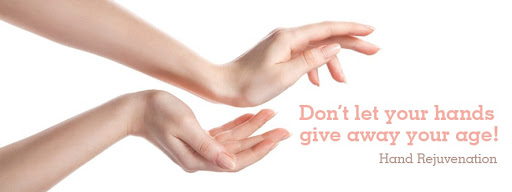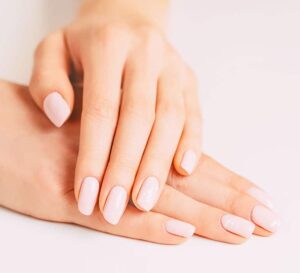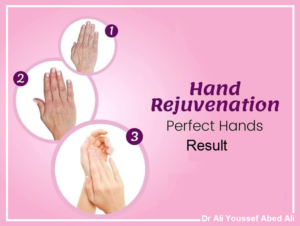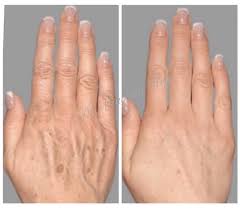
Hand Rejuvenation
Also known as hand enhancement
Hands are one of the first places where the telltale signs of aging become apparent. Even if you have taken steps to keep your face and neck looking youthful, sun-damaged, veiny, wrinkled hands can make you look older than you are. There are a number of effective techniques to rejuvenate your hands, improving the quality and texture of your skin, while decreasing the wrinkling and prominent veins.

How is a hand rejuvenation procedure performed?
Whether you require volume replacement, correction of sun damage or erasure of lines and wrinkles, your surgeon has numerous treatment options to choose from. Most procedures are minimally invasive, but in the case of very loose, wrinkled skin, your plastic surgeon may also recommend surgery to remove excess skin.
Volume replacement to treat protruding bones, tendons or veins:
Fillers
- The filler is injected into the hand at multiple locations.
- It is placed in layers at multiple levels to reshape and augment the hands.
Fat injections
suction tubes (cannulas) is used to remove fatty tissue from areas of your body with excess tissue, such as the abdomen, hips, back or thighs.
- The fat is then processed for fat transfer and re-injected into your hands.
- The fat is grafted in layers at multiple levels to ensure that a smooth, linear deposit of fatty tissue is left to reshape and augment the hands.
- The liposuction incisions are closed with sutures.
- Tape is placed on the skin of the infiltrated areas and left in place for 3 or 4 days as a protective barrier.
If you have poor circulation from vascular disease, diabetes, chemotherapy, HIV/AIDS or smoking you may not get as much of the graft volume to take as other patients.
Sclerotherapy
- Sclerotherapy is effective for medium-sized blood vessels (greater than 3 mm in diameter).
- A solution is injected into the vein with a micro-needle.
- The vein turns white (blanches) and gradually disappears.
- There is little if any discomfort when undergoing treatment and there is no downtime.
Laser vein treatment
- Laser treatment is typically used to treat small to medium-sized blood vessels (1-3 mm in diameter).
- A handpiece is passed over your skin and the laser light is absorbed by the blood, causing the vessels to coagulate and be absorbed by the body.
- There is little downtime.
Treatment for fine lines, wrinkles, discoloration, sun damage, or irregular pigmentation
Superficial chemical peels
- A chemical solution is applied to your hands with a sponge, cotton pad or swab, or brush.
- Your surgeon decides how long to leave the solution on your hands by carefully observing any changes in the appearance of your skin.
- With certain types of chemical peels, the solution may be “neutralized” after an appropriate amount of time has elapsed.
- No covering or after-peel ointment is necessary and you can expect little downtime.
Intense pulsed light
- Your eyes will be covered for protection.
- The IPL hand piece is placed directly over the treatment area and light waves are emitted.
- After a series of treatments, the spots and discolorations on your hands will be begin to fade and disappear.
- PDT uses a solution on the skin before applying the IPL device which allows for more aggressive treatment.
- Recovery from IPL is similar to recovering from a mild sunburn.
Laser skin resurfacing
- Your eyes will be covered so that your corneas and retinas are protected from the laser.
- A wand is passed over your skin and the resurfacing laser emits a very brief pulse of high intensity light that damages the upper layers of your skin.
- As your skin heals, healthier, younger looking tissue emerges.



